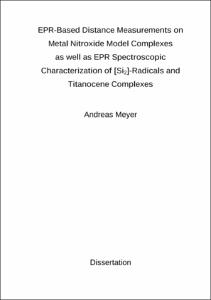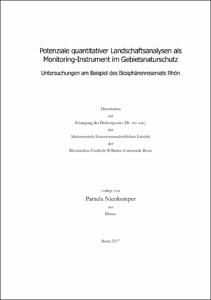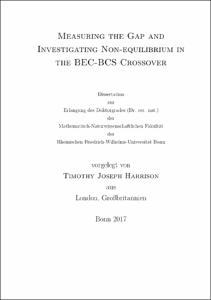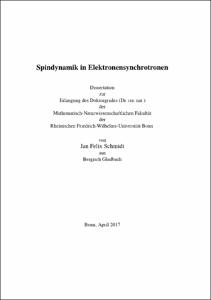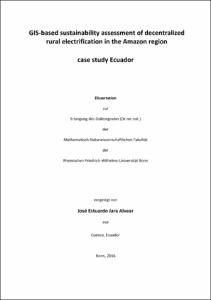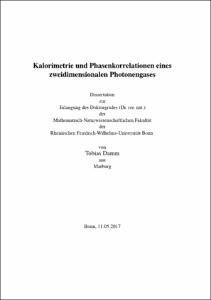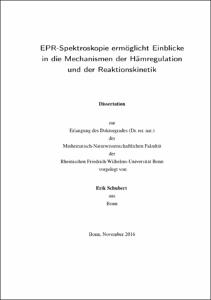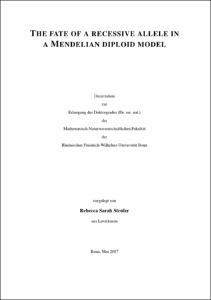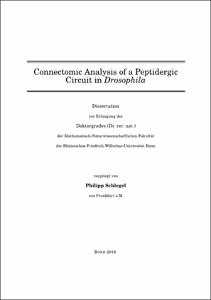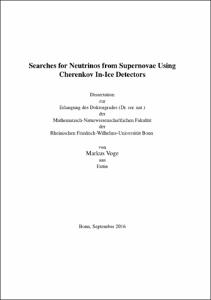E-Dissertationen: Suche
Anzeige der Dokumente 1-10 von 210
EPR-Based Distance Measurements on Metal Nitroxide Model Complexes as well as EPR Spectroscopic Characterization of [Si2]-Radicals and Titanocene Complexes
(2017-04-25)
Metalloproteins are a class of proteins which contain metal ions in their active site. If these metal ions carry unpaired electrons, EPR spectroscopy can be used to identify and characterize these ions or even localize ...
Potenziale quantitativer Landschaftsanalysen als Monitoring-Instrument im Gebietsnaturschutz: Untersuchungen am Beispiel des Biosphärenreservats Rhön
(2017-08-25)
Im Kontext des Monitorings im Gebietsnaturschutz treten bei der Quantifizierung von Land-schaftsveränderungen auf Basis kategorialer Daten unterschiedliche methodische und inhalt-liche Probleme auf, die in der Arbeit am ...
Measuring the Gap and Investigating Non-equilibrium in the BEC-BCS Crossover
(2017-09-15)
This thesis presents a new Bose-Fermi mixture quantum gas experiment that has been used to measure the gap over the BEC-BCS crossover and investigate the non-equilibrium dynamics of a superfluid in response to a quench of ...
Spindynamik in Elektronensynchrotronen
(2017-09-29)
Um unser Verständnis des Aufbaus der Materie voranzutreiben sind Experimente mit hochenergetischen Teilchen erforderlich, bei denen alle Eingangsparameter bekannt sind und variiert werden können. Zu diesen gehört auch die ......
Spin Dynamics in Electron Synchrotrons
Providing spin polarized particle beams with circular accelerators requires the consideration of depolarizing resonances which may significantly reduce the ......
Spin Dynamics in Electron Synchrotrons
Providing spin polarized particle beams with circular accelerators requires the consideration of depolarizing resonances which may significantly reduce the ......
GIS-based sustainability assessment of decentralized rural electrification in the Amazon region: case study Ecuador
(2017-09-21)
Decentralized rural electrification (DRE) is necessary for electricity supplies in remote and disadvantaged areas in the Amazon region and improvement of the living conditions of the people there. However, the sustainability ...
Kalorimetrie und Phasenkorrelationen eines zweidimensionalen Photonengases
(2017-08-10)
Phasenübergänge spielen in der Physik eine bedeutende Rolle. Es entspricht unserer Alltagserfahrung, dass Materie ihre Eigenschaften in Abhängigkeit von äußeren Parametern wie Volumen, Druck oder Temperatur bei Überschreiten ...
EPR-Spektroskopie ermöglicht Einblicke in die Mechanismen der Hämregulation und der Reaktionskinetik
(2017-10-19)
Die für essentielle biologische Prozesse wie Atmung, Gastransport und Katalyse prosthetische Gruppe Häm findet nicht nur festgebunden an Proteine Verwendung. Es konnte in der Vergangenheit gezeigt werden, dass sie durch ...
The fate of a recessive allele in a Mendelian diploid model
(2017-08-23)
The omnipresence of sexual reproduction in a highly competitive world is a fascinating phenomenon. Its evolution and maintenance is up to now not completely understood since it is known that sexual reproduction require ......
Connectomic Analysis of a Peptidergic Circuit in Drosophila
(2017-09-21)
The homologous neuropeptides neuromedinU (NMU) and hugin have similar effects on food intake and physical activity in mammals and Drosophila, respectively. Little is known about the neuronal networks that employ either ......
Die homologen Neuropeptide NeuromedinU (NMU) und Hugin haben ähnliche Effekte auf Nahrungsaufnahme und physische Aktivität in Säugetieren bzw. Drosophila. Über die neuralen Netzwerke, in denen das jeweilige Neuropeptid ......
Die homologen Neuropeptide NeuromedinU (NMU) und Hugin haben ähnliche Effekte auf Nahrungsaufnahme und physische Aktivität in Säugetieren bzw. Drosophila. Über die neuralen Netzwerke, in denen das jeweilige Neuropeptid ......
Searches for Neutrinos from Supernovae Using Cherenkov In-Ice Detectors
(2017-05-15)
Supernovae mark the violent death of massive stars. They are among the most energetic processes known to exist in the Universe. Neutrinos play crucial roles in supernova processes. Besides the low-energy neutrinos emitted ...


